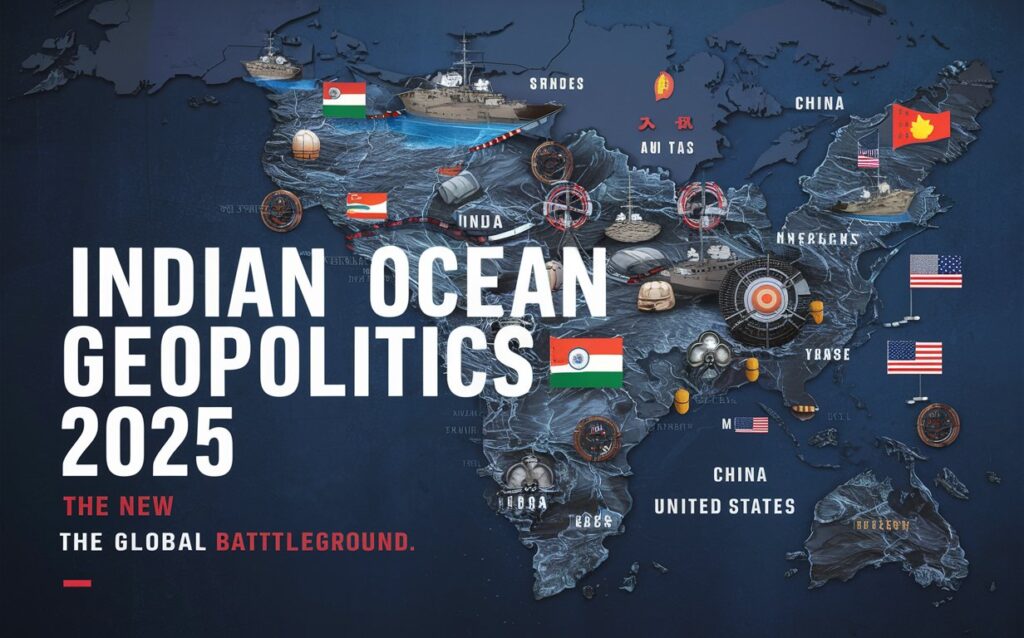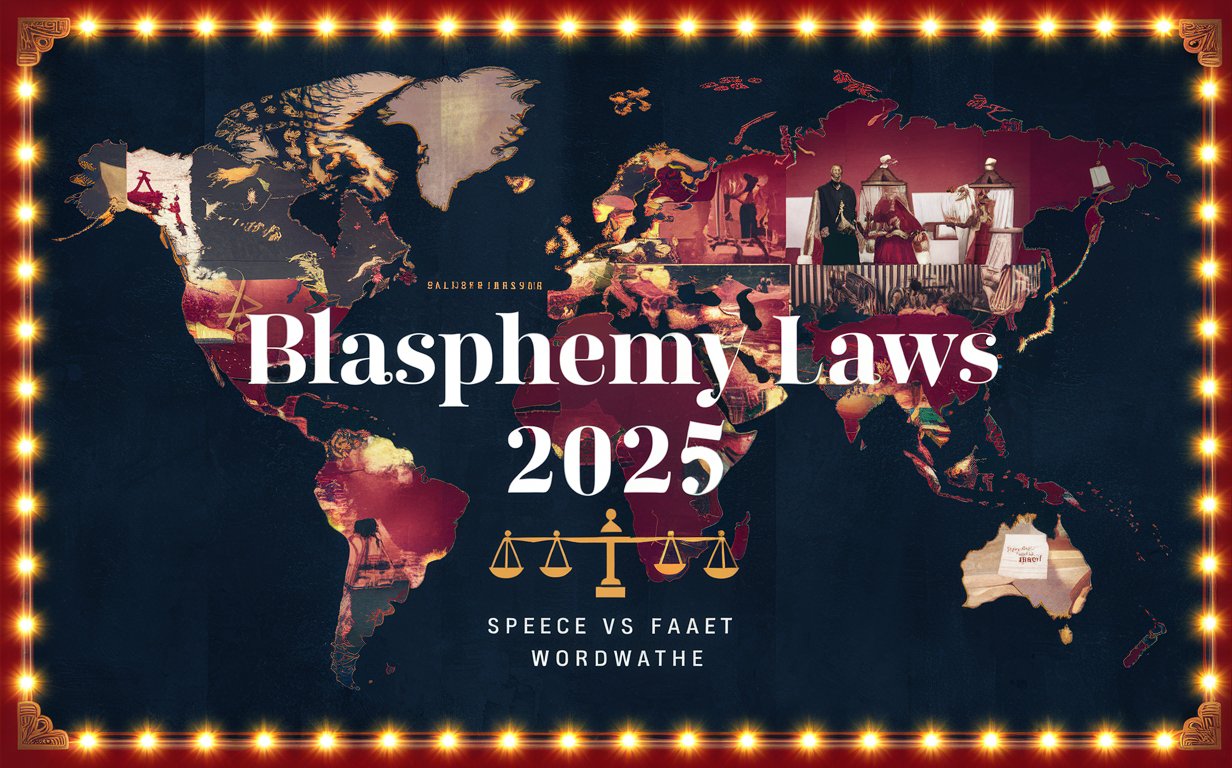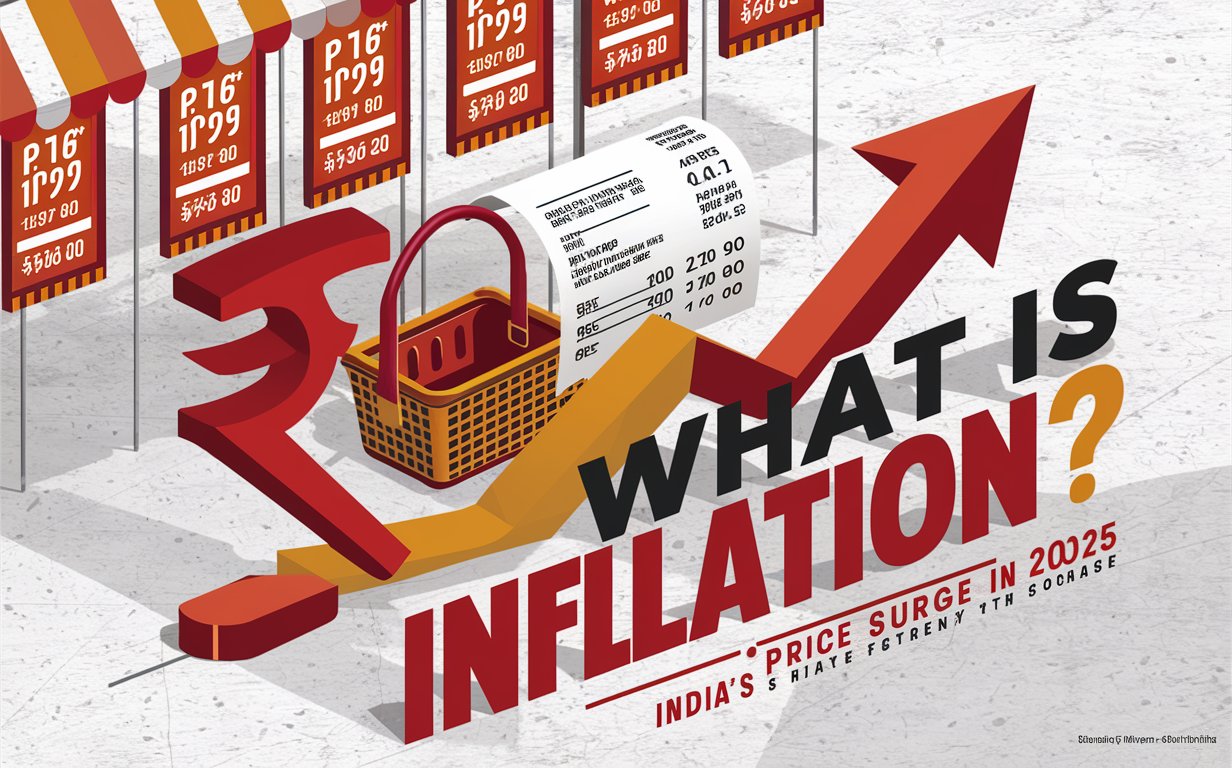🌍 Geopolitics of the Indian Ocean: Why This Region Is the New Global Battleground in 2025
The Indian Ocean Region (IOR) is emerging as one of the most critical geopolitical hotspots in 2025. With major global powers vying for influence, this strategic waterbody is no longer just a maritime trade corridor—it’s a center of military alliances, economic competition, and diplomatic power plays.
India, China, the U.S., and regional players are all reshaping global politics through their actions in the IOR.

🧭 Why the Indian Ocean Matters
The Indian Ocean is the third-largest ocean in the world, connecting Asia, Africa, and Australia. Its importance stems from:
- Hosting over 80% of the world’s maritime oil trade routes
- Connecting vital choke points like the Strait of Hormuz, Bab-el-Mandeb, and Malacca Strait
- Home to 2.5 billion people across littoral nations
This region also houses critical undersea internet cables, making it a data artery of the global economy.
🚢 Trade, Oil, and Chokepoints
Over 60,000 ships pass through the Indian Ocean annually, many transporting:
- Crude oil from the Middle East to Asia
- Manufactured goods from Asia to Europe and Africa
- Agricultural exports from East Africa and Australia
Strategic chokepoints like:
- Strait of Hormuz (20% of global oil supply)
- Strait of Malacca (shortest route between Pacific and Indian Ocean)
…have made the region a global energy and trade hub.
🏴☠️ Military Presence and Power Projection
In 2025, the Indian Ocean is witnessing military build-up and naval assertiveness:
- China’s PLA Navy maintains bases in Djibouti and operational access via Pakistan’s Gwadar Port
- India has strengthened its military presence in the Andaman & Nicobar Islands
- United States operates major bases in Diego Garcia, Qatar, and Bahrain
- France and UK maintain active deployments in the western Indian Ocean
The rise of QUAD (India, US, Japan, Australia) and AUKUS (Australia, UK, US) have further intensified competition.
🛰️ Strategic Islands and Bases
Islands in the Indian Ocean are turning into military outposts and surveillance hubs:
- Diego Garcia (US): A crucial launchpad for operations in the Middle East and Africa
- Chagos Archipelago (UK): Strategic for satellite and naval tracking
- Lakshadweep & Andamans (India): India’s frontline monitoring stations
- Cocos Islands (Australia): Key to Indian Ocean–Pacific Ocean transitions
Control over these islands equals control over the sea lanes and air corridors of global commerce.
💼 Economic Interests and Maritime Diplomacy
Nations are using infrastructure diplomacy to secure influence:
- China’s Belt and Road Initiative (BRI) includes ports like Hambantota (Sri Lanka), Kyaukpyu (Myanmar), and Gwadar (Pakistan)
- India’s SAGAR Doctrine (Security and Growth for All in the Region) focuses on mutual economic growth, disaster relief, and connectivity
- U.S. Indo-Pacific Strategy supports a free and open maritime order
These soft power strategies are now as important as naval fleets.
🌐 Climate, Piracy, and New-Age Threats
The region is vulnerable to:
- Climate change: Sea level rise threatens Maldives, Seychelles, and low-lying Indian coasts
- Piracy: Especially near the Horn of Africa
- Cybersecurity and undersea cable sabotage: New threats emerging with digital warfare in 2025
In this complex environment, diplomacy and deterrence must go hand in hand.
🧾 Conclusion: The Indian Ocean’s Geopolitical Destiny
The Indian Ocean is not just water between continents—it is the epicenter of future global power balances. For India and the world, securing this region means safeguarding trade, technology, energy, and peace. In 2025, whoever masters the Indian Ocean could shape the future of global order.
DoFollow External Links:
Internal Links:



Post Comment